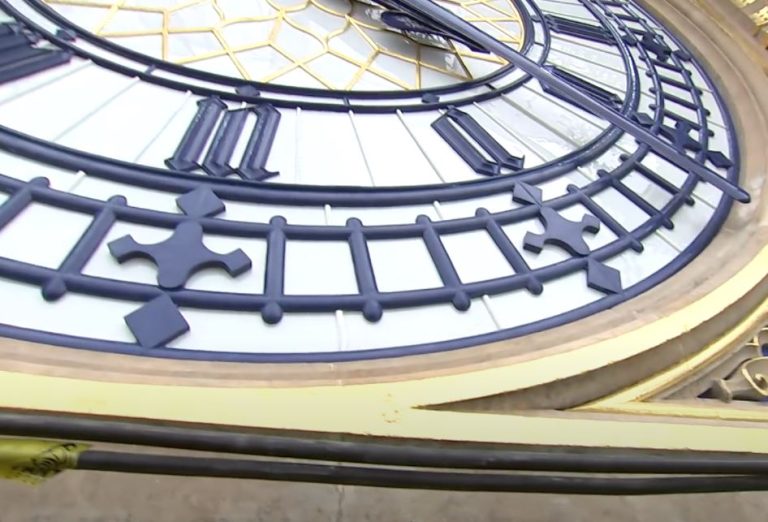Big Ben, also known as the Elizabeth Tower, has long been one of Britain’s most beloved landmarks, standing watch over the Palace of Westminster. It has chimed through time, weather, and war for more than 160 years. But by 2017, aging had started to take its toll, necessitating a once-in-a-lifetime renovation that would preserve a symbol while preparing it for the future by fusing tradition and technology.
The Five-Year Transition
The most intricate conservation project in the tower’s history swiftly developed from what started out as a routine maintenance task. Weathering, pollution, and hidden World War II damage caused the renovations to take five years to complete and cost £80 million. But like any masterpiece, the outcome more than made up for the cost.
Restoration Highlights
| Category | Details |
|---|---|
| Duration | 2017 – 2022 |
| Cost | £80 million |
| Original Completion | 1859 |
| Height | 96 meters (approx. 315 feet) |
| Key Repairs | Clock mechanism overhaul, roof ironwork restoration, new lighting systems |
| Modern Features | Discreet elevator, energy-efficient LED lighting |
| Craftsmanship | Stone masonry, glass cutting, gilding, horology |
| Historic Challenges | WWII bomb damage, undocumented 20th-century repairs, lead-based paint removal |
Restoring the Chimes and the Color
The restoration of Big Ben’s clock faces to their original Prussian blue was one of the most noticeable aesthetic adjustments. The vivid Victorian color scheme was found beneath ages and pollution, and conservators were able to accurately restore it. In addition to this aesthetic makeover, the bells themselves underwent testing and calibration, and in 2022, to commemorate the project‘s completion, they resumed their regular chimes.
Old Methods, New Goals
Many traditional trades, some of which were almost extinct, were incorporated into the conservation effort. There were hundreds of experts in horology, metalworking, woodcarving, and masonry. These exceptionally talented craftspeople invested in Britain’s cultural identity and revived traditional crafts in addition to fixing a clock tower. Their work was remarkably successful and respectful of history, repairing and recasting thousands of components.
Taking on the Unexpected
Engineers discovered significant Second World War bomb damage that had not been repaired halfway through the project. Broken metalwork and twisted clock parts in the southwest corner of the tower needed careful inspection. To preserve the narrative carved into the tower’s bones, some components—such as a delicately distorted clock face—were left intact while others were restored or recast.
Using Resilience to Rebuild
With equal care, modern safety systems were introduced. To guard against catastrophic damage in the unlikely event of a clock weight failure, a newly designed crash structure was created underneath the tower. The design, which was constructed with little disturbance to the historic site, was extremely sturdy and able to absorb enormous impact force thanks to the use of polymer layers and a steel honeycomb structure.
Constructing an Artistic Work
Just scaffolding turned into a structural innovation achievement. Without fastening to the delicate brickwork, engineers had to create trusses and supports that could support the tower’s tapering shape. The system was especially creative because it permitted artists to work on any surface without violating security or heritage preservation regulations.
A Repair for the Documents
The documentation strategy was arguably the most innovative. Every stone that was replaced and every piece of iron that was repaired was 3D scanned and digitally cataloged. The blind spots that today’s engineers faced won’t affect future generations. This degree of foresight guarantees that Big Ben’s continued preservation will be much simpler—and noticeably better informed.
A Nation’s Sound
It was more than just a timekeeper making a comeback when the bell tolled once more on Remembrance Sunday in 2022. It was a national soul’s reawakening. Big Ben’s restoration serves as a potent metaphor for respecting the past while looking to the future with conviction, skill, and care. It serves as a reminder that when we make investments in our heritage, we are also making investments in our collective identity, and that is a legacy worth supporting.


